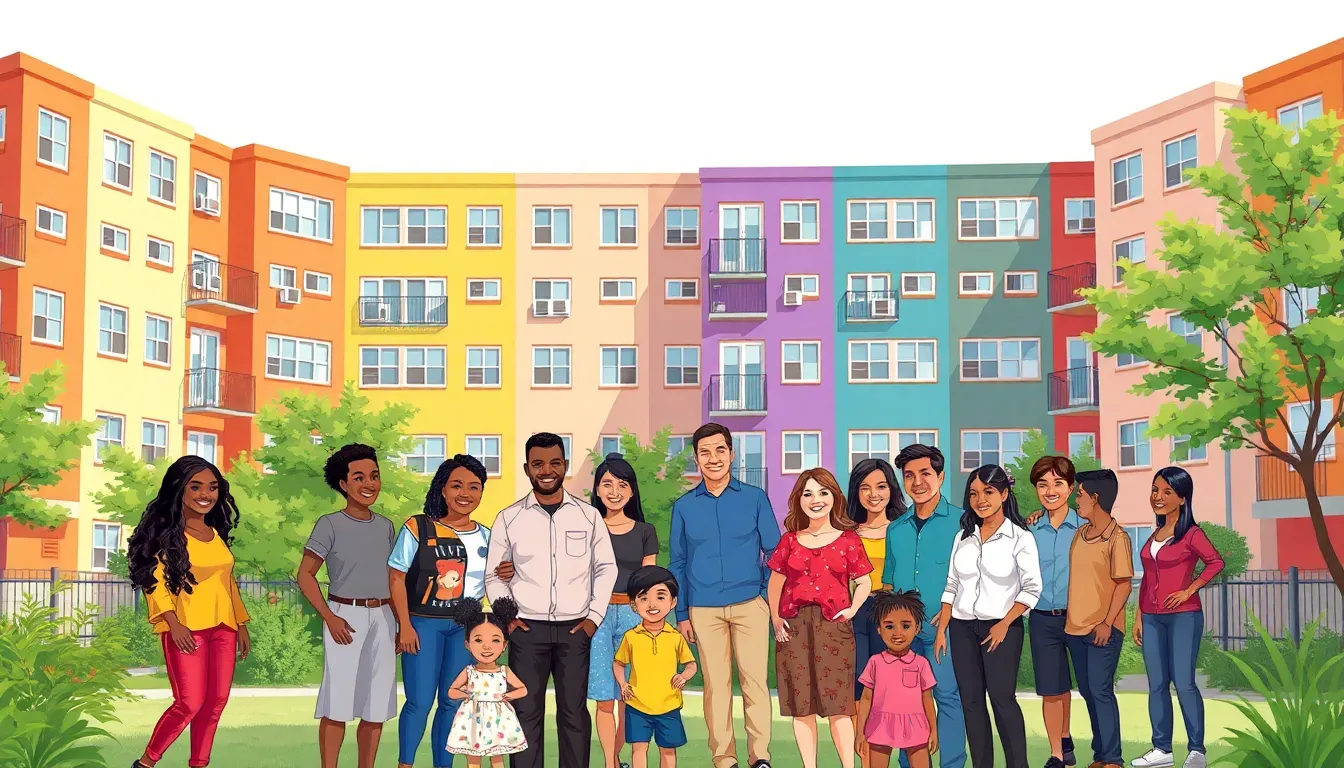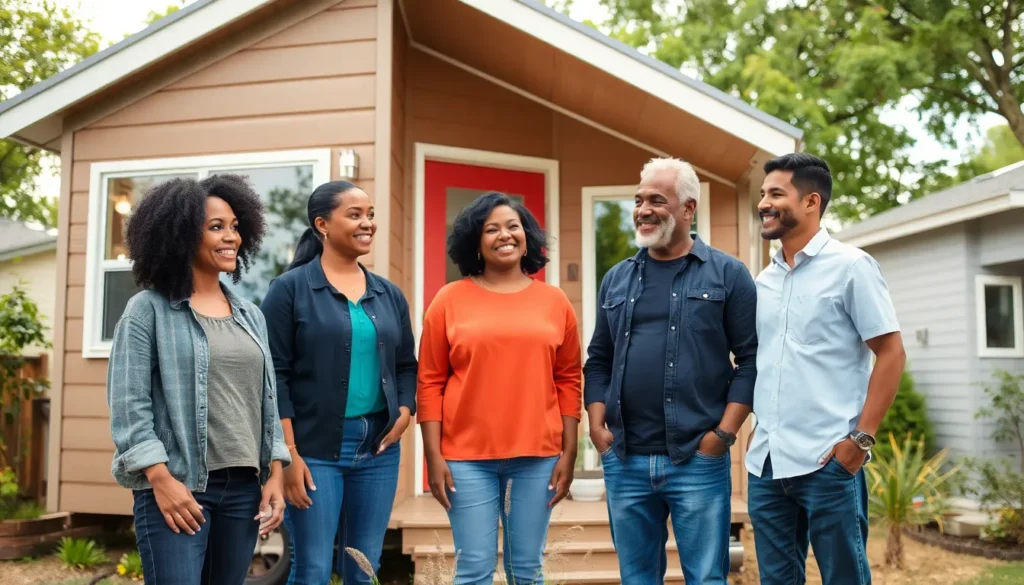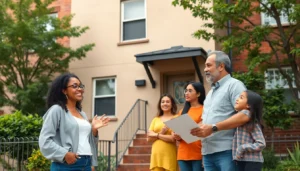Table of Contents
ToggleFinding a place to call home shouldn’t feel like a game of Monopoly where the rent’s skyrocketing faster than a rocket. Affordable housing is the unsung hero in the quest for a cozy nest without emptying the wallet. From charming tiny homes that make you feel like a modern-day Hobbit to vibrant community living options, there’s a world of choices that won’t break the bank.
In a time when housing prices seem to have a mind of their own, exploring the types of affordable housing available can be a game-changer. Whether it’s a cozy apartment in a bustling city or a quaint house in the suburbs, these options provide not just shelter but a sense of community and belonging. Let’s dive into the exciting world of affordable housing and discover how it can offer comfort and stability without the financial headache.
Understanding Affordable Housing
Affordable housing encompasses various options designed to meet the budgetary needs of individuals and families. It aims to provide housing solutions that allow residents to spend no more than 30% of their income on rent or mortgage payments. This percentage reflects a widely accepted standard used by many housing agencies.
Several types of affordable housing exist, each catering to different demographics and financial situations. Subsidized housing offers rental assistance to low-income tenants, reducing their monthly expenses. Non-profit organizations often build and manage these units, ensuring they remain accessible.
Another option is workforce housing, which targets moderate-income earners, such as teachers and healthcare workers. These individuals often struggle with the rising housing costs in urban areas. Availability of these units helps retain essential workers in communities.
Public housing serves low-income families and individuals, providing units managed by local housing authorities. Governments typically own these properties and offer reduced rent in exchange for regulations on tenant income.
Additionally, cooperatives or co-ops offer a collaborative living experience. Residents buy shares in the housing organization, allowing them to participate in governance decisions. This model fosters a strong sense of community while maintaining affordable living costs.
By understanding the various types of affordable housing, individuals can identify the best fit for their circumstances. Exploring these options enables them to secure stable homes without overwhelming their finances.
Types Of Affordable Housing

Affordable housing encompasses various forms that cater to diverse needs and income levels. Each type aims to ensure individuals and families can secure stable living situations within their budget.
Public Housing
Public housing consists of government-owned units offered to low-income individuals and families. Local housing authorities manage these apartments or houses, focusing on providing safe and affordable living spaces. Rent is typically based on a percentage of the tenant’s income, often around 30%. Public housing helps alleviate homelessness and encourages community development by maintaining a stable housing environment for its residents.
Subsidized Housing
Subsidized housing involves financial assistance designed to support low- and moderate-income households. Government programs, such as Section 8 vouchers, allow eligible tenants to choose private rentals, making housing more affordable. Property owners receive government payments that cover the difference between the market rent and the portion tenants can afford. This arrangement fosters housing stability while promoting diverse communities by integrating tenants into the broader rental market.
Affordable Housing Trusts
Affordable housing trusts allocate funds specifically to develop and maintain affordable housing. These trusts often pool resources from government sources and private donations to support various housing initiatives. They may finance construction projects or provide subsidies to developers committed to building affordable units. Trusts help facilitate partnerships between community organizations and housing developers, ultimately increasing the availability of affordable options in urban and rural areas alike.
Benefits Of Affordable Housing
Affordable housing provides the chance for financial stability, allowing families to allocate funds for necessities beyond housing. Reduced stress accompanies lower housing costs, leading to improved mental health and overall well-being. Increased community engagement occurs when families find stable homes in vibrant neighborhoods.
Access to quality education rises with affordable housing, as families typically relocate closer to good schools. Local economies benefit when residents can afford to spend on goods, services, and local businesses, which in turn boosts job creation. Diverse communities thrive in areas with affordable housing, fostering inclusivity and a sense of belonging among residents.
Social mobility increases for individuals with access to affordable housing, creating opportunities that contribute to personal and professional growth. Health outcomes improve when stable housing conditions exist, as long-term residents often maintain better physical and mental health. Families also experience enhanced safety, as affordable housing developments often include protective measures and community programs.
When people afford housing, it strengthens neighborhood ties and builds lasting relationships among residents. Financial resources are freed up for savings, education, and investments when housing costs remain manageable. Supporting affordable housing initiatives reflects a commitment to equitable communities and social justice, paving the way for a brighter future for all.
Communities benefit from affordable housing by attracting diverse populations and maintaining stability in changing markets. Long-term residents contribute to local culture and create unique identities, enriching the community experience. Investing in affordable housing not only addresses immediate needs but also fosters resilience and sustainability for future generations.
Challenges In Affordable Housing Development
Affordable housing development faces numerous challenges that hinder progress. High construction costs significantly limit the number of units built. Zoning regulations create additional barriers, restricting where affordable housing can be developed.
Funding issues often arise, as public resources available for affordable housing remain limited. Competition for financing drives up costs further, making it difficult to maintain affordability. In many cases, developers cannot secure the necessary capital to initiate projects.
Neighborhood resistance, sometimes referred to as NIMBYism (Not In My Backyard), complicates development efforts. Communities may oppose new projects due to concerns about property values, traffic, or changes in neighborhood character.
Compliance with complicated federal and state regulations creates additional obstacles. Navigating the permitting process can be time-consuming and expensive, delaying project timelines significantly.
Additionally, access to suitable land can pose challenges. Urban areas often have limited parcels available for development, while rural regions may lack infrastructure and services.
Environmental impact assessments may add further complexity. Evaluating potential effects on local ecosystems can prolong the development process, adding costs and requiring special permits.
Addressing these challenges requires collaborative efforts among stakeholders. Developers, government agencies, and community organizations must work together to alleviate barriers and create effective solutions.
Affordable housing remains a crucial element in fostering stable and vibrant communities. By exploring various options such as tiny homes community living and subsidized housing individuals can find solutions that align with their financial realities. The benefits extend beyond mere shelter as affordable housing enhances quality of life promotes economic stability and strengthens community ties.
Despite the challenges in developing affordable housing the ongoing commitment from stakeholders can pave the way for more inclusive neighborhoods. By prioritizing these initiatives society takes significant steps toward ensuring that everyone has access to safe and affordable homes. This commitment not only supports individuals and families but also contributes to a more equitable and just future for all.







